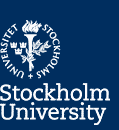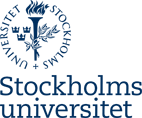
Welcome back to work! I hope you have enjoyed a nice and relaxing summer – and perhaps also with some interesting discussions of new exciting results at conferences. The summer has been unusually warm and we are now looking forward to some cooler days and new inspiration for our research and other duties. I am looking forward to meet new and old colleagues and friends – and to welcome new students! During the summer, the climate and the Baltic Sea have been discussed intensively in media with frequent references to, and input from, research and researchers from Stockholm University. The debate during the summer was also focused on teachers and teaching, the school system, and on teacher-training programs. The low numbers of fully trained school teachers is of great concern and ways to deal with this has been discussed. Together with other higher education institutions, Stockholm University has been charged with the task to find new ways to prepare new groups of students for a teaching career.
This is my first “A word from the Dean” text and this is perhaps part of the reason why it is longer than what has been typical before. One semester and one summer have passed since I assumed the duties as Dean and Deputy Vice President. This is, needless to say, an important task and it has been interesting and challenging with large numbers of meetings and with many new interesting contacts. As a newcomer I have learned to appreciate the good advice of the Vice Dean, Ylva Engström. In addition, Katariina Kiviniemi Birgersson and the Office of Science provide an excellent and highly professional support to me in my role as Dean and to the faculty as a whole. The Office of Science also supports the Board of Science, “områdesnämnden” (ON) and its subcommittees and its “arbetsutskott” (AU). These are complex and sometimes difficult tasks, which are very well handled. The arbetsutskott, the AU, consist of myself, the Vice Dean, the four Section Deans, the Chair of the faculty Committee for Undergraduate Education, and a student representative. In the AU, we discuss strategic matters in preparation for meetings in our four Section boards and in the Board of Science itself. These discussions are occasionally difficult but we are now finding ways to deal also with such matters in constructive ways, I think. The collaboration with the academic area for human science with Deputy Vice Presidents, Astri Muren and Elisabeth Wåghäll Nivre is very effective. I have been pleased to find that we nearly always share the same views on how to reach the best conditions and support for research and teaching activities.
I have visited departments and centres of the natural science area during the spring. I did this together with the President, the Vice President, the University Director, the Vice Dean and others. It was interesting to see that although the heads of departments and the centres presented their activities in different ways and with different techniques, their main messages were always effectively brought forward and a pleasure to listen to. It was very inspiring to get brief glimpses of our highly successful research and of our many well-managed teaching activities. Our faculty is one of the very strongest in Sweden as, for example, can be seen from many successful applications to external funding agencies. Clearly, our faculty has many highly skilled researchers who are able to convey their new ideas in effective ways. This year’s Göran Gustafsson Prize had two of the five prize winners from our faculty. Eight researchers from the faculty have advanced to the second round of the Swedish Research Council’s consolidator grant call, and five have advanced to the final round with interviews of the ERC consolidator call. Recently, three ERC Starting grants with SU and our faculty as hosts were, as well as a number of EU-network grants, received. The faculty works actively and in collaboration with the Research Support Office, “forskningsstöd”, to support applications to the Wallenberg Foundations, the Swedish Research Council and some of the EU programmes. We are now discussing with the Research Support Office how this support could be further improved – in particular for EU-applications.
The faculty has many internationally leading researchers and research projects at the international forefront. This obviously helps to build very strong research environments, which is crucial for our PhD-programs. In addition, this is important for teaching at the undergraduate level and for our Masters programmes as we may offer bachelor and master degree projects directly connected with high-level international research. The key to further develop strong research and teaching environments is to continue to recruit the best researchers and the most skilled teachers through open, broadly advertised positions with the strongest possible international competition.
When visiting departments and centres, we discussed – among other things - student recruitment, examination-rates, how to better support young researchers, and how to manage rebuilding projects – especially those needed for laboratory work. There has been a good deal of frustration around the rebuilding projects and their delays. This is of particular concern for Assistant lecturers, “biträdande lektorer”, who only have three years to demonstrate their scientific skills and independence before they are expected to apply for promotion to Associate professor. Many newly recruited Associate professors and Professors have the same concerns as they want to get their research at Stockholm University going as soon as possible. Well-managed rebuilding projects are thus crucial in order for SU to remain an attractive university for strong international researchers. In consultation with department and faculty leaderships, the Property Management Office, fastighetsavdelningen, will now deal with such rebuilding projects with high priority. In connection with the department visits, we also discussed the department support to Assistant lecturers, which should be in the form of a PhD position and in some cases for equipment.
The evaluation of applications for promotion from assistant lecturer to Associate professor will continue to be sharp and comparisons with the strengths of applications for announced Associate professor positions will be considered. One important aspect in this context is that the new form of assistant lectureship position, which is the only possible form since April 1st this year, allows up to five years of work before an application for promotion to Associate professor is due. This may lead to stronger applications for promotion to associate professor and may be one reason to also discuss the procedure for promotion from Associate professor to Professor. Such discussions have recently been initiated at the faculty. Before the first applications from Assistant lecturers with five years of merits are submitted, we will handle a large number of applications from candidates employed on the “old” type of position.
During the spring, the faculty has decided on new rules for departmental laboratory safety regulations. Following this decision, we have formed a working group, which will propose a regulation checklist from which the departments and the centres will select the items relevant for their particular form of laboratory work. Further, I will propose that we allocate means in next years budget for faculty coordination of laboratory safety issues and to further develop the collaboration with laboratory safety experts within the central administration.
By January 1st 2018, the former Department of Numerical Analysis and Computer Science, NADA, was merged with the Department of Mathematics. This reorganisation was supported by the opening of a number of new positions in computational mathematics and by so-called pair-PhD projects where the department funds 50 % of two PhD positions, one in mathematics and one in another subject area. The PhD students have a common project, which they approach by methods from their respective fields of study. This, we hope, is a good way to stimulate collaboration between departments. The first pair-PhD announcement attracted considerable attention but with a short deadline. Therefore, we intend to make a new announcement soon (means are reserved for this in the budget). In addition, one may perhaps consider pair-PhD projects for other activities, such as for example teacher training, where the aim would be to bring subject research and research in subject didactics closer to each other. We will continue to discuss these possibilities in the fall. At the beginning of this year, the Department of Neurochemistry became part of the Department of Biochemistry and Biophysics, DBB. This is supported through the opening of a new professorship in neurochemistry with additional resources. The recent announcements of professorships in biochemistry and neurochemistry have attracted many highly qualified applicants, showing that DBB and the Faculty of Science offer highly attractive research and teaching environments.
Further examples of ongoing processes: An analysis of how to strengthen the area of analytical chemistry and related activities at SU; the introduction of a new third-cycle subject area at the Department of Mathematics – preliminarily in computational mathematics; discussions on how specific parts of the activities at the Baltic Sea Centre (Baltic Eye) and Stockholm Resilience Centre may be developed over the coming years, and how the medical physicist programme in the Stockholm region can be secured.
Finally, I would once more like to welcome all colleagues and students to a new academic year full of more exciting research, high-quality teaching and, hopefully also, great fun!
Henrik Cederquist




